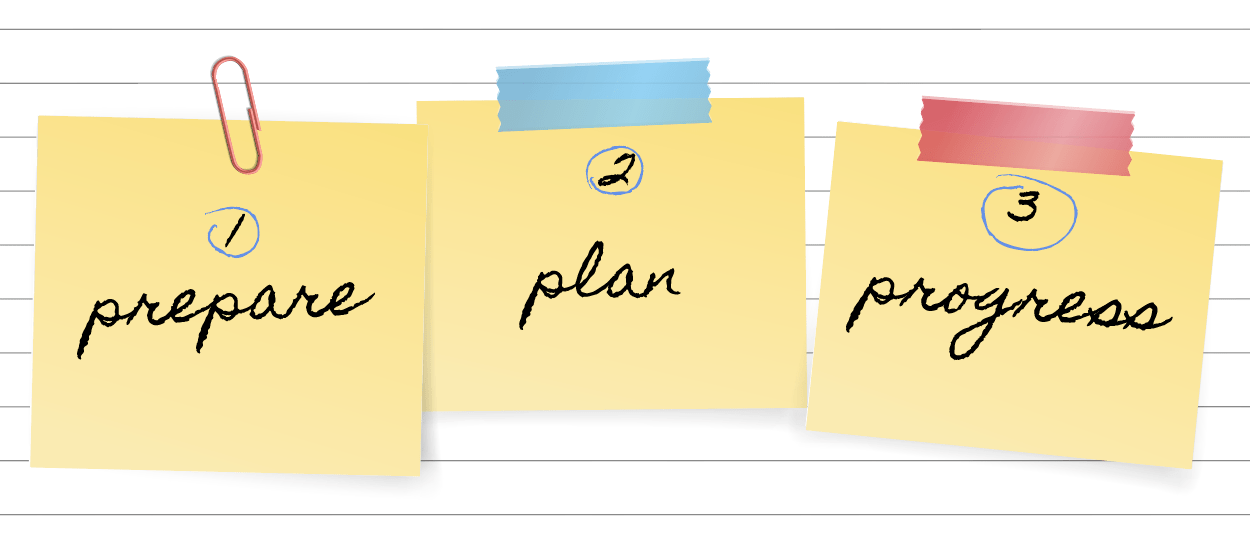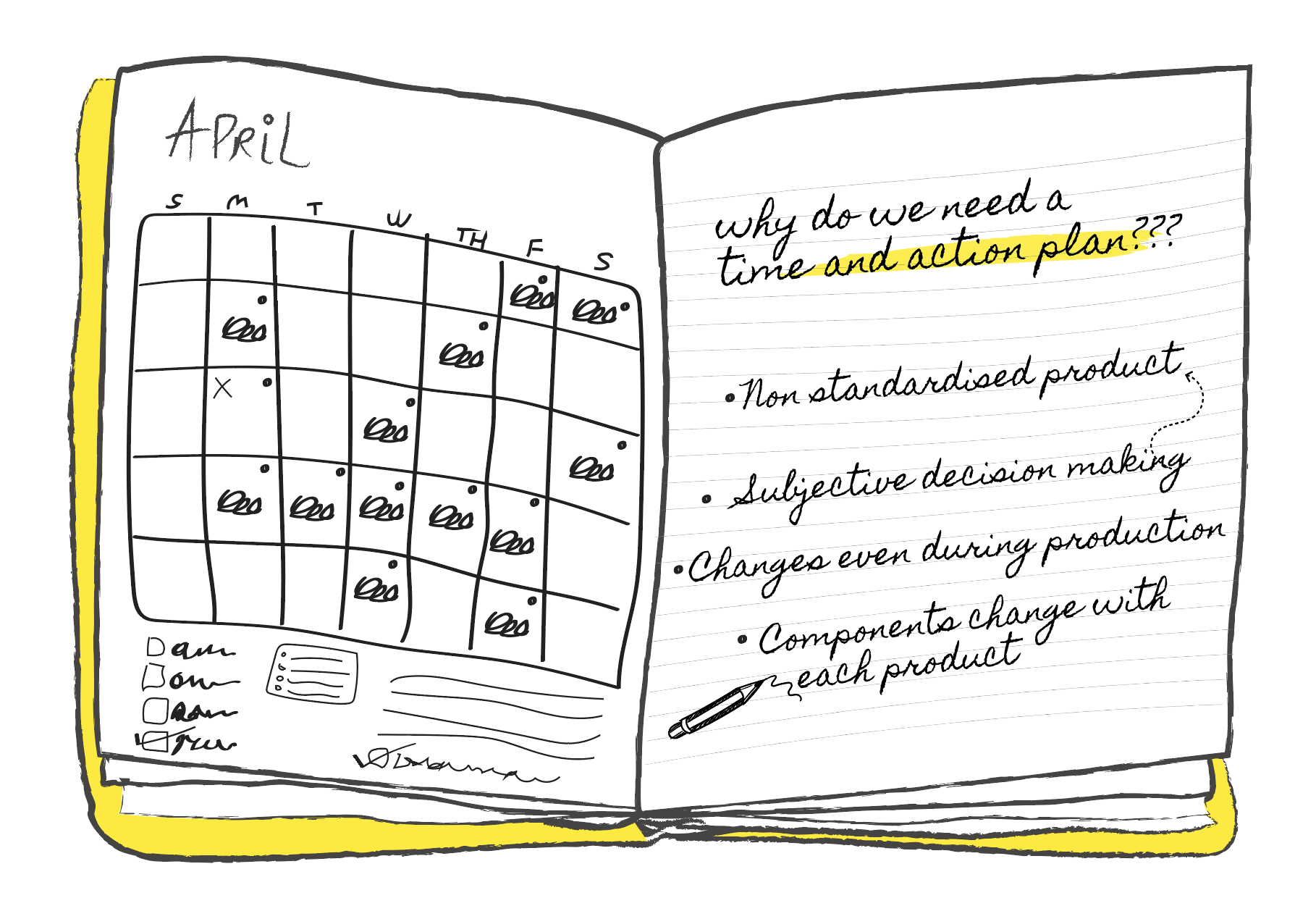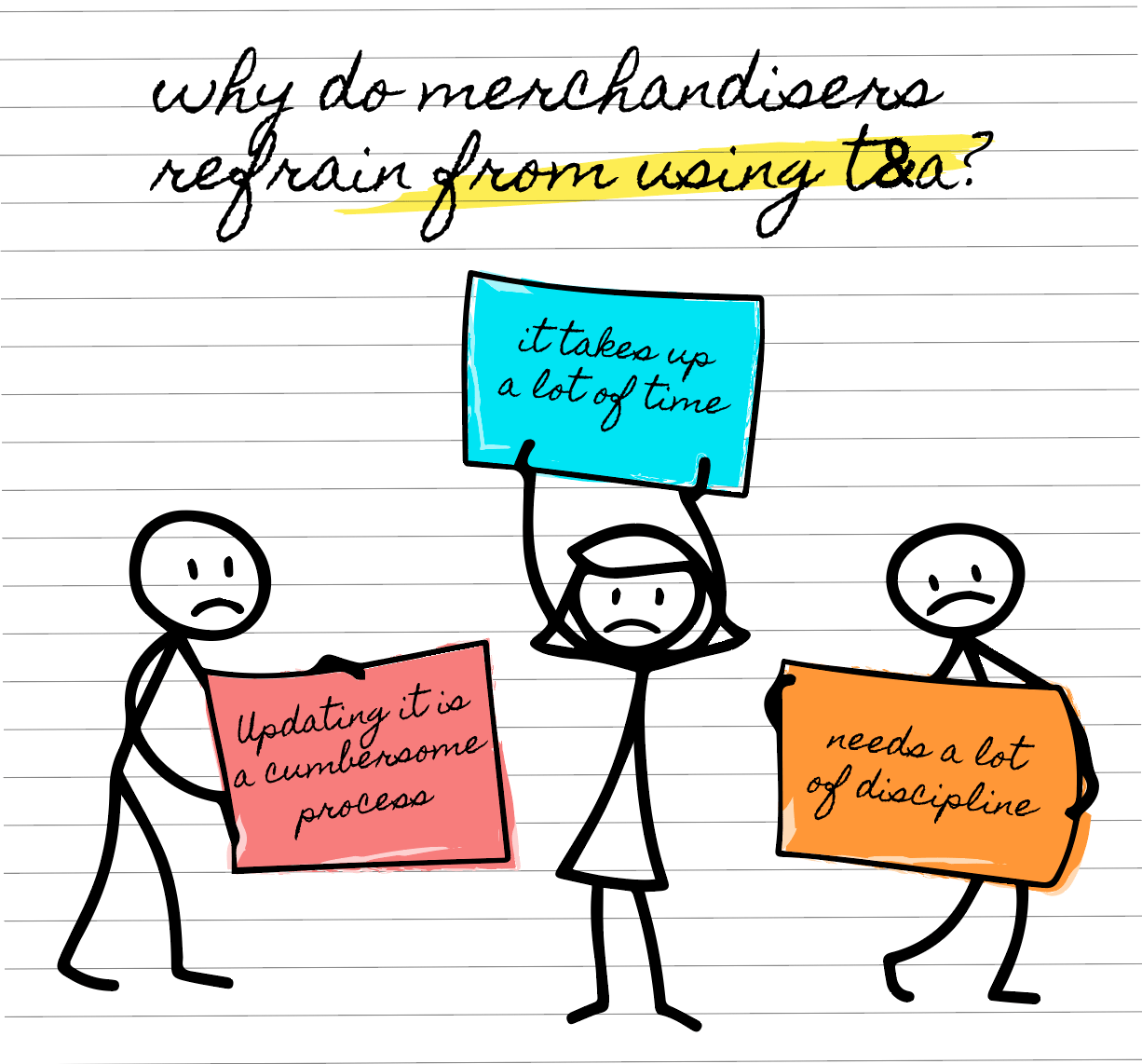Having spent many years in the Apparel industry, I have come across multiple situations where organisations have lost business due to delay in deliveries. The onus of this delay lies on the sourcing team and invariably they do not seem to have objective answers. All we get are emotional responses.
When asked about Time and Action Calendar (T&A), mails and words are what are shown to the stakeholders instead of an actionable plan.
I have always wondered why this happens!
The basis of any sourcing organisation/team to function well, is planning, and a T&A is the heart of that planning process which keeps everything on track.
Hence, I have taken up this topic as the third article in the series My Sourcing Journal.
In this article I will discuss in detail
- Pillars of the sourcing function
- Why apparel sourcing needs a T&A
- Why merchandisers shy away from it
- Basis of a good T&A,
- Tips to manage the T&A, and
- Digitisation of T&A and making it a management tool
Lets begin by first understanding the pillars of the sourcing function, namely:

- Preparation refers to pre-production planning that includes counter quotes, prior approvals, and selecting the right partners who would therein ensure timely delivery along with quality.
- Planning is ensuring that each and every variable is taken care of. Right vendor is allocated with the right product and all variables like costs closures, approvals, fabrics orders, trims etc are in place.
- Once the preparation and planning is in place, monitoring the Progress is the key to ensuring success.
T&A plays a role in all the above as creating the plan and execution monitoring is the essence of sourcing. And yet it is the most ignored.
A simple tool like T&A does wonders in organising the work flow and ensuring that issues are dealt with proactively and don’t impact the business adversely.
While we speak about the importance of T&A, it's pertinent that we understand its importance specifically in the apparel industry.
SO, WHY DOES APPAREL SOURCING NEED A T&A?
Apparel industry is a complex one, and sourcing products even more so.
Many a times we see changes happening during the manufacturing process like changing embroidery, wash and similar parameters. Some of these decisions may be last minute calls taken by people who may not even be a part of the process; such as designers, sales teams, business heads. This subjectivity is one of the very unique problems of this supply chain.
At any given point a merchandiser deals with 100-200 styles, each style consisting of 20/30 variables. In essence we are talking about each merchandiser managing about 5000/6000 variables. Variables like fabrics, trim fabrics, buttons, interlinings and many more.
I have never understood why merchandisers tend to rely on their minds to manage this complexity. Invariably they plot everything in their minds and expect things to flow smoothly. And as we know from experience that in sourcing, anything that can go south, will.
REALISTICALLY SPEAKING, THE ONLY WAY OUR BUSINESS CAN FUNCTION SMOOTHLY IS CHARTING OUT A T&A AND FOLLOWING IT.

Apparel products are ever changing and so are its variables. If we look at other industries, many of these variables are standardised.
For example, in automobile manufacturing, the same engine, chassis, tyre may be used to produce many different models of cars. Here only the superficial elements change, minimising the number of variables used.
In apparel manufacturing however, everything changes every time. For example fabric, sewing thread, buttons to interlinings change from one style to another. And hence, a T&A is of the utmost importance in our industry.
While we understand that the T&A is the backbone of sourcing, we see many merchandisers resist using this tool.

Many believe that updating and maintaining T&A is a cumbersome process and often takes up a lot of their working hours.
The T&A begins with planning in minute details, the many different variables and then updating the progress against these variables on a periodical basis. This requires a lot of discipline and becomes a reason behind the merchandisers resistance towards it.
In reality, if used properly, working hours will reduce by 50%. If the T&A is shared with everyone, it cuts down unnecessary meetings, reviews and updates. The data is available with everyone and things move smoothly.
BASIS OF A GOOD T&A
Ours is a very old industry and many buying houses, exporters, sourcing businesses have reached great success by keeping the T&A as the backbone of their businesses.
One of the best practices to overcome the inertia and resistance towards the T&A is to create a simple work discipline within the merchandising team.
- 1st hour - spent going through the emails, and actioning out the urgent and important ones.
- 2nd hour - spent updating the T&A which in turn tells the merchandiser the priorities and the action points for the day.
- Last hour of the day - spent responding to all the emails and queries which have come in during the day.
As the T&A is updated everyday, the critical aspects start falling into place and work gets aligned. This is typically how a merchandisers day should look like.
SOME TIPS TO MANAGE THE T&A
- Most people keep changing the end date when there is a delay and then map the actuals. One must understand that the end date is sacrosanct. The right way to go about this is to ensure a missed deadline doesn’t impact the end date. If one deadline is missed, the key thing is to catch the next deadline.
The real job of the merchandiser is to create the T&A, monitor it closely and come up with solutions when a deadline is missed, and ensure the end date is not changed.
- A tip I always share is to chase the PCD or the planned cut date. If a factory cuts the product at the right date, there are minimal chances of delay in the delivery. A factory will only cut the product when all its variables are in place. Once it has cut the product, it is not going to hold it and wait. This will automatically ensure that the product moves out of the factory as soon as possible.
- Regular reviews, maintaining T&A hygiene and accuracy, and updating it every week are some of the key areas which a sourcing organisations needs to focus on.
DIGITISATION OF T&A AND MAKING IT A MANAGEMENT TOOL
Today, with digitisation becoming a mainstay, there are systems built around T&A. Many PLM tools systemise the T&A to an extent where it automatically creates actionable points for management. Within the system an escalation matrix is created which eases out the work process for everyone. It allows for transparency between all stakeholders making everyone proactive and keeping delays in check.
To conclude, sourcing is similar to project management and T&A is the perfect tool to enable efficiencies.

Once an order is placed, we decide on an end date/delivery date and work backwards to decide on milestones to meet this end date. These milestones have to be aligned with the various stakeholders in order to execute the product in the stipulated time period.
Once this is calendarised, it's just a matter of ensuring each milestone is met. And in case of delays, proactive measures need to be taken.
I believe that by ensuring T&A management and adopting digital systems to do is the key to succeeding in a sourcing team/organisation.
Do share your comments and inputs to make this a fruitful conversation.
I would like to thank Ms.Poonam Sood Lal for helping shape this article with her invaluable inputs.
RELATED TOPICS:#Apparel,Anindya Ray
Leave a comment
Our email address will not be published. Required fields are marked *







3 Comments
Soumya NairMay 05, 2021 at 09:51 am
Very well articulated article. Throughout my sourcing career,TNA was my best buddy.Can't emphasize how well it fares in pooling/managing the data,and keep mind free from working data clutter.Apparently brain can be utilized for other cognitive processes like decision making.
Prashanth HVMar 09, 2021 at 18:56 pm
Rightly said Anindya. While TNA is the most efficient tool it is time-consuming and one needs to be very patient enough to update at regular intervals. As it is said the most simple things are the difficult ones to do and adopt. When the Business head or the management is serious about TNA and they review regularly, then every merchant would update. Initially, a merchant would feel the tool is cumbersome and a waste of time, but once he adopts it in his routine he will find the real benefit of it.
Kripa shankerMar 01, 2021 at 20:41 pm
Very well touched topic Sir, making T&A and strict Deciplined approach will really make huge difference. Transparency from stakeholders and real actual data monitoring and updating real time is the key. T&A makes life easier for entire value chain. Thanks for sharing great insight about this crucial tool for managing operations.